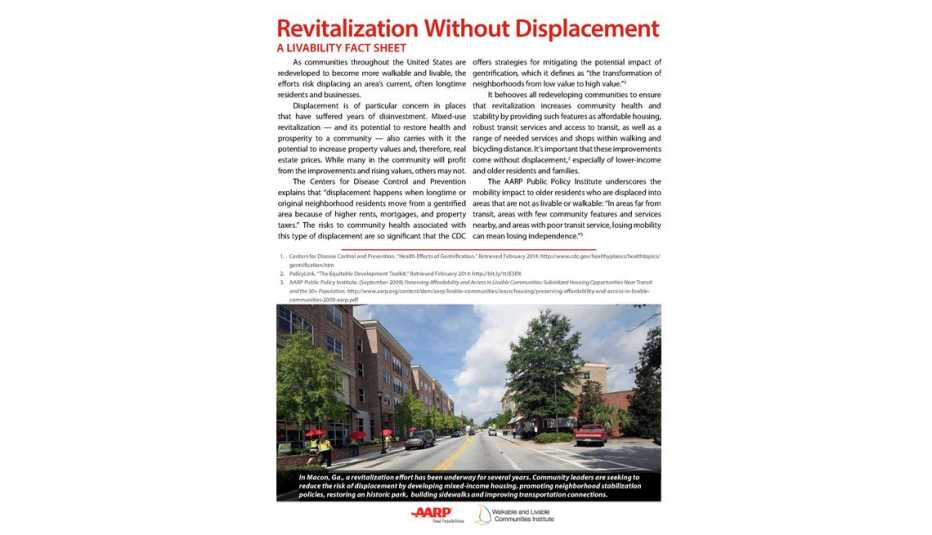AARP Hearing Center
As communities throughout the United States are redeveloped to become more walkable and livable, the efforts risk displacing an area’s current, often longtime residents and businesses.


Download the Revitalization Without Displacement Fact Sheet:
Displacement is of particular concern in places that have suffered years of disinvestment. Mixed-use revitalization — and its potential to restore health and prosperity to a community — also carries with it the potential to increase property values and, therefore, real estate prices. While many in the community will profit from the improvements and rising values, others may not.
Key Points
Among the problems and solutions cited in the fact sheet:
- Very low income American families spend 55 percent of their household budget on transportation costs, and the average household spends more than $8,000 a year on automobile costs. (Revitalized places made walkable and accessible to transit can reduce these expenses, which makes the community more accessible to and supportive of all people.)
- Although displacement due to revitalization (one potential impact of gentrification) is a concern, some studies suggest that socioeconomic and racial diversity is an enduring feature of gentrifying neighborhoods and that gentrification can be beneficial to an area’s original residents.
Among the places where community revitalization has worked:
- In Denver, Colorado, developments of more than 30 for-sale units must set aside 10 percent as affordable for households earning 50 to 95 percent of the area’s median income, depending on household size. Offsets to make the set-asides feasible to developers include a 10 percent density bonus, a $5,600 subsidy per unit for up to 50 units, parking requirement reductions and expedited permits. A total of 3,395 affordable homes were built within three years of the policy’s inception.
- In New Columbia, a neighborhood in Portland, Oregon, an 82-acre site of what had been World War II-era worker barracks and then public housing has been revitalized as a walkable community of 854 housing units that feature front porches, two community gardens, a Main Street and “Village Market,” several parks and public spaces, a public elementary school, a Boys & Girls Club and a recreation center. New Columbia has 854 housing units.
How to Use
Because the fact sheets in the Livability series are only four pages each, the materials are quick and easy to read online or to download and print for sharing.
The Revitalization Without Displacement fact sheet can be used by policy makers, planners, local leaders and citizen activists to educate themselves and others about the need for a community to be livable for all residents.
Fact sheet published Summer 2014


























































